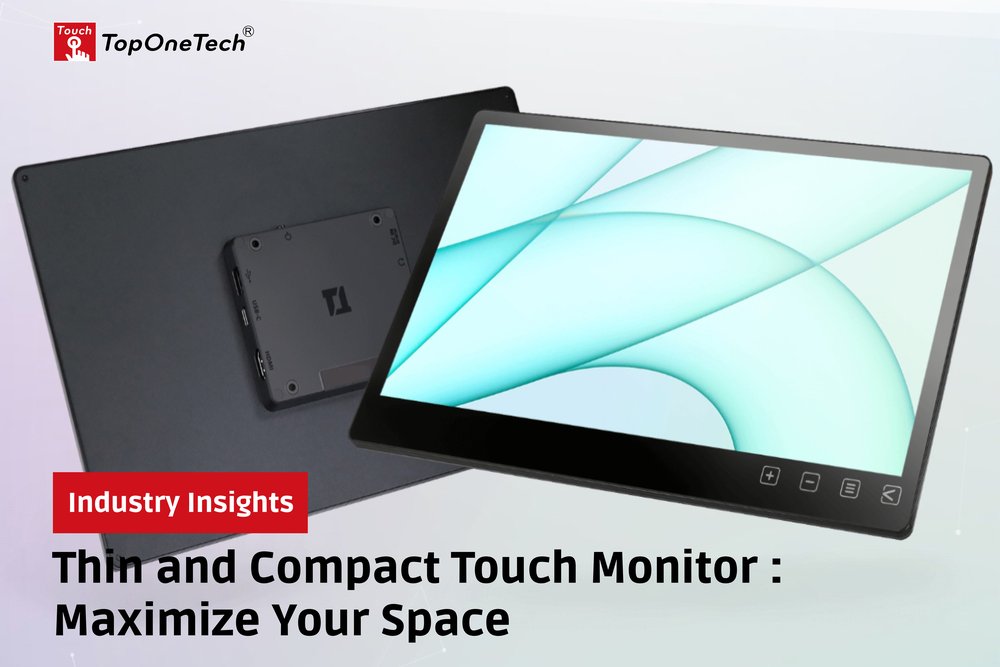
The Material Behind Touch Screen: An In-Depth Exploration – Touch screens have revolutionized the way we interact with devices, from smartphones and tablets to ATMs and interactive kiosks. Furthermore, the technology behind these screens is a fascinating blend of materials science, engineering, and electronics. At the heart of every touch screen lies a combination of materials that make touch sensitivity possible. This article delves into the materials that make touch screens work, their properties, and the innovations shaping their future.
The Material Behind Touch Screen – The Basics of Touch Screen Technology
Before exploring the materials, it’s essential to understand the two main types of touch screen technologies: resistive and capacitive.
- Resistive Touch Screens: These screens are composed of several layers, including two thin, electrically conductive layers separated by a small gap. When a user touches the screen, the two layers make contact, changing the electrical resistance, which is then processed to determine the touch location.
- Capacitive Touch Screens: These screens use the electrical properties of the human body to detect touch. They consist of a glass layer coated with a transparent conductor. When a user touches the screen, it disturbs the electrostatic field, which is detected and processed to determine the touch point.
The Material Behind Touch Screen – Key Materials in Touch Screens
1. Indium Tin Oxide (ITO)
Touch screens widely use Indium Tin Oxide (ITO) as their primary material. Additionally, it is a transparent conductive oxide that provides the perfect balance of electrical conductivity and optical transparency.
- Properties: High transparency (up to 90%), good electrical conductivity, and can be deposited in thin films.
- Applications: Used in the conductive layer of capacitive touch screens, ITO allows the screen to detect the touch while remaining clear and unobstructed.
2. Glass
Glass is a fundamental component of touch screens, providing both a substrate for other layers and a protective surface.
- Properties: It offers high clarity, durability, scratch resistance, and the ability to manufacture in ultra-thin layers.
- Applications: Glass, utilized in both resistive and capacitive screens, can undergo treatment to enhance toughness (e.g., Gorilla Glass) and coating to improve sensitivity and reduce reflections.
3. Polyethylene Terephthalate (PET) Film
PET film is a flexible, durable plastic that serves as a protective and functional layer in touch screens.
- Properties: High tensile strength, flexibility, and transparency.
- Applications: PET film, commonly serving as one of the conductive layers in resistive touch screens, can also laminate onto capacitive screens for protection.
4. Silver Nanowires
Silver nanowires are an emerging material that offers a promising alternative to ITO due to their high conductivity and flexibility.
- Properties: Excellent electrical conductivity, flexibility, and the ability to form transparent conductive networks.
- Applications: Silver nanowires excel in flexible and foldable touch screens, making them ideal for next-generation devices requiring flexibility and high performance.
5. Graphene
A single carbon atom layer in a hexagonal lattice, graphene boasts exceptional electrical, thermal, and mechanical properties.
- Properties: Exceptional electrical conductivity, transparency, and mechanical strength.
- Applications: Though still in the research phase, graphene has the potential to replace ITO and other conductive materials, especially in flexible and transparent touch screens.
Innovations and Future Trends
The touch screen industry is constantly evolving, driven by the need for more durable, flexible, and responsive materials. Moreover, some key trends and innovations include:
- Flexible and Foldable Displays: Moreover, materials like silver nanowires and graphene are paving the way for flexible and foldable touch screens, expanding the possibilities for new device form factors.
- Improved Durability: Furthermore, advances in glass treatments and coatings are making touch screens more resistant to scratches and impacts, extending the lifespan of devices.
- Better Sensitivity and Accuracy: New conductive materials and improved sensor technologies are enhancing the touch sensitivity and accuracy, providing a more responsive user experience.
- Eco-Friendly Materials: Research into sustainable and eco-friendly materials aims to reduce the environmental impact of touch screen production and disposal.
Conclusion
In conclusion, the materials that make up touch screens are a testament to the incredible advancements in materials science and engineering. Additionally, ITO, durable glass, graphene, and silver nanowires are core materials in our daily technological interactions and future innovations. As a result, future touch screens will be more flexible, durable, and responsive, revolutionizing our interaction with the digital world.
We can customize wide range of touch screen products, specially designed for your application scenarios.
Feel free to contact us if our products interest you :
Whatsapp/Call us at : +86 13631610695
Email : sales@toponetech.cn



